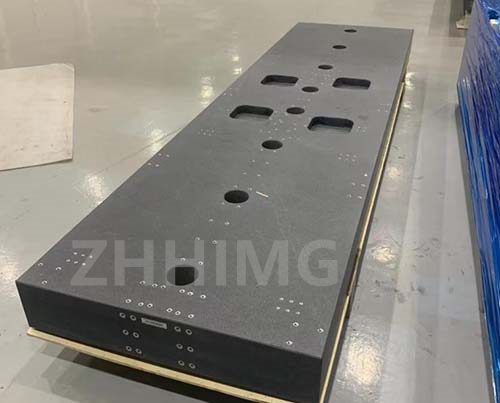The material selection for a granite mechanical lathe is a critical aspect that significantly influences its performance, durability, and precision. Granite, known for its exceptional rigidity and stability, is increasingly being utilized in the construction of mechanical lathes, particularly in high-precision applications.
Granite offers several advantages over traditional materials like cast iron or steel. One of the primary benefits is its superior vibration-damping properties. When machining, vibrations can lead to inaccuracies and surface defects. Granite's dense structure absorbs these vibrations, resulting in smoother operation and enhanced machining accuracy. This characteristic is particularly beneficial in precision engineering, where even the slightest deviation can result in significant errors.
Another important factor in material selection is thermal stability. Granite exhibits minimal thermal expansion, which means that it maintains its dimensional integrity even under varying temperature conditions. This stability is crucial for maintaining the precision of the lathe, especially in environments where temperature fluctuations are common.
Additionally, granite is resistant to wear and corrosion, making it a long-lasting choice for mechanical lathes. Unlike metals, granite does not rust or corrode, which reduces maintenance costs and extends the lifespan of the equipment. This durability is particularly advantageous in industrial settings where machinery is subjected to harsh conditions.
However, the selection of granite as a material for mechanical lathes is not without challenges. The machining of granite requires specialized tools and techniques due to its hardness. Therefore, manufacturers must consider the cost implications and the availability of skilled labor when opting for granite.
In conclusion, the material selection of granite for mechanical lathes presents a compelling case for its use in precision engineering applications. Its unique properties, including vibration damping, thermal stability, and resistance to wear, make it an ideal choice for high-performance lathes, despite the challenges associated with its machining.
Post time: Nov-06-2024

